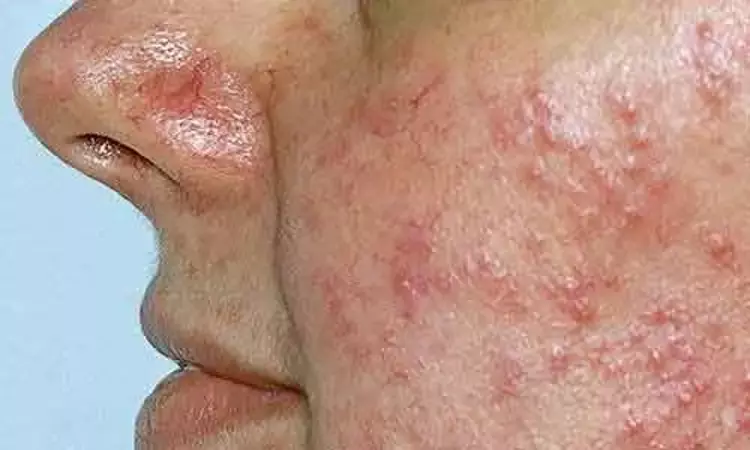- Home
- Medical news & Guidelines
- Anesthesiology
- Cardiology and CTVS
- Critical Care
- Dentistry
- Dermatology
- Diabetes and Endocrinology
- ENT
- Gastroenterology
- Medicine
- Nephrology
- Neurology
- Obstretics-Gynaecology
- Oncology
- Ophthalmology
- Orthopaedics
- Pediatrics-Neonatology
- Psychiatry
- Pulmonology
- Radiology
- Surgery
- Urology
- Laboratory Medicine
- Diet
- Nursing
- Paramedical
- Physiotherapy
- Health news
- Fact Check
- Bone Health Fact Check
- Brain Health Fact Check
- Cancer Related Fact Check
- Child Care Fact Check
- Dental and oral health fact check
- Diabetes and metabolic health fact check
- Diet and Nutrition Fact Check
- Eye and ENT Care Fact Check
- Fitness fact check
- Gut health fact check
- Heart health fact check
- Kidney health fact check
- Medical education fact check
- Men's health fact check
- Respiratory fact check
- Skin and hair care fact check
- Vaccine and Immunization fact check
- Women's health fact check
- AYUSH
- State News
- Andaman and Nicobar Islands
- Andhra Pradesh
- Arunachal Pradesh
- Assam
- Bihar
- Chandigarh
- Chattisgarh
- Dadra and Nagar Haveli
- Daman and Diu
- Delhi
- Goa
- Gujarat
- Haryana
- Himachal Pradesh
- Jammu & Kashmir
- Jharkhand
- Karnataka
- Kerala
- Ladakh
- Lakshadweep
- Madhya Pradesh
- Maharashtra
- Manipur
- Meghalaya
- Mizoram
- Nagaland
- Odisha
- Puducherry
- Punjab
- Rajasthan
- Sikkim
- Tamil Nadu
- Telangana
- Tripura
- Uttar Pradesh
- Uttrakhand
- West Bengal
- Medical Education
- Industry
Case of Rosacea treated with light-emitting diodes

Rosacea is a common inflammatory skin condition affecting approximately 5% of the world population. Therapeutic approaches to rosacea are focused on symptom suppression by means of anti-inflammatory agents. More recently, photodynamic therapy, especially light-emitting diodes, has been introduced as a valid alternative to conventional therapy.
A 22-year-old Caucasian woman presented to a dermatological clinic with a 5-year history of pink eruptions on her nose. She also reported a burning sensation. She was diagnosed as having papulopustular rosacea subtype, moderate grade, according to the classification and staging of rosacea developed by the NRS Expert Committee. In the previous 2 years, she was treated with two cycles of orally administered tetracycline (Lymecycline), 300 mg per day, for 12 weeks. Systemic therapy was associated with metronidazole cream 1% for cycles of 6 months.
In the last 6 months before the visit, she also submitted to 40% pyruvic acid peeling every 25 days, with poor response and continuous relapses. A combined and sequential plan of blue (480 nm ± 15 nm, 300 J/minute) and red (650 ± 15 nm, 100 J/minute) LED therapy regimen was planned twice a week for a total of ten sessions. A quasi-monochromatic 120 LED system (Dermodinamica® instrument, ELISOR Srl, Milan, Italy) was used for 15 minutes (each wavelength).
Erythema, burning sensation and itching were assessed using a visual scale grading (0 = no symptoms, 4 = very severe). Erythema and papules were subjectively assessed by the dermatologist, whereas the intensity of itch and burning sensations was expressed by our patient. A good response was obtained for the patient after ten treatments with LEDs. The patient reported a reduction of symptoms such as burning and itching. Also, a reduction of erythema and papules was observed after five sessions of LED therapy (Figs. 1b and 2b). Further improvement was observed at the end of treatment: ten sessions of LED therapy (Figs. 1c ).
Several therapeutic approaches are currently available for treating rosacea and they are mainly aimed at controlling disease symptoms. The therapeutic plan has to be adapted to the rosacea subtype and tailored according to the dominant manifestations of the patient [32, 35]. In general, the reduction of oral therapy in favour of topical or physical therapy is desirable in order to reduce side effects for patients and increasing the safety of the treatment.
For further reference log on to:
Dr Kamal Kant Kohli-MBBS, DTCD- a chest specialist with more than 30 years of practice and a flair for writing clinical articles, Dr Kamal Kant Kohli joined Medical Dialogues as a Chief Editor of Medical News. Besides writing articles, as an editor, he proofreads and verifies all the medical content published on Medical Dialogues including those coming from journals, studies,medical conferences,guidelines etc. Email: drkohli@medicaldialogues.in. Contact no. 011-43720751


